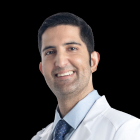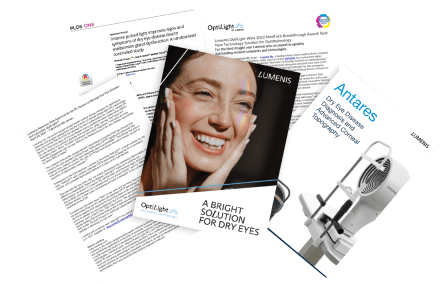
Kambiz Silani, OD is the found and chief clinical director at Beverly Hills Optometry in Beverly Hills, California. He takes a modern approach towards the treatment of ocular surfaces disease, particularly dry eye. His practice philosophy is patient education and patient empowerment.
Kambiz Silani, OD, Chief Clinical Director, Beverly Hills Optometry, Beverly Hills, California
Treating dry eye can be challenging, but highly rewarding. In our practice, we’re continually evolving and seeking new therapies, especially evidence-based in-office therapeutics. We proudly offer OptiLight, which has been an amazing foundational treatment providing a multifactorial solution for this multifactorial disease. We’re seeing the benefits of office-based treatments for a variety of stages of dry eye disease.
OptiLight is core in dry eye treatment planning
As an advanced dry eye center, the majority of our patients (over 75%) see us either for dry eye consultation or treatment. We start off every dry eye patient with a consultation, followed by a dry eye workup that includes meibography. I recommend OptiLight for patients who have meibomian gland dysfunction (MGD) and/or ocular rosacea (telangiectasic vessels along the eyelid margin), or who were given other modalities such as pharmaceutical eye drops from a previous doctor and have not responded.
When we manage dry eye, we often use OptiLight as foundation and build on it based on individual needs. For example, in addition to OptiLight, dry eye patients with anterior blepharitis may need lid exfoliation to remove bacterial biofilm buildup on the lash line, while patients with blocked meibomian glands benefit from thermal pulsation to remove unhealthy oils. These therapies work synergistically.
Enhanced clinical effectiveness in moderate to severe cases
Like any condition, dry eye is best when treated early. When a candidate for OptiLight has moderate signs of dry eye disease, we perform the standard four treatments, spaced about 2-4 weeks apart.
For instance, we had a patient fitted with a premium daily contact lens who complained of lens discomfort. After reviewing her images, we diagnosed her with ocular rosacea. The abnormal blood vessels (telangiectasia) were leaking inflammatory mediators and causing dry eye symptoms. We determined that the contact lenses weren’t the problem—the problem was the ocular surface itself. After only four OptiLight treatments, this patient was back to wearing her lenses comfortably.
On the more severe side of the scale, a woman in her mid-50s visited our practice. She was driven by her daughter because her dry eye was preventing her from driving. She was wearing sunglasses indoors for two reasons: she was severely light sensitive and her eyes were significantly red. Meibomian gland evaluation with digital pressure showed her glands were clogged with unhealthy, inspissated oils. Her profession requires heavy screen time, which was negatively impacting her dry eye symptoms. It was clear that her dry eye disease had significantly affected her productivity, her quality of vision, and her quality of life. She’d nearly given up hope of returning to normal. After six OptiLight sessions, the patient’s eye redness was significantly reduced, and her tear breakup time was markedly better. Additionally, she had heat therapy and started applying immunomodulator drops. After several months, she was back to work, driving and no longer wearing sunglasses all day.
Success evolves by word of mouth from happy OptiLight patients
It’s my goal to provide the highest level of care possible within my scope of practice. When we accomplish that for dry eye patients, they become our biggest fans. They drive hours to see us. They get relief not just physically, but also mentally. I tell my dry eye patients, “You’re not alone. In fact, we commonly see patients who are on the severe end of the scale. We’ll be here with you along this journey.”
OptiLight is proving to be a cornerstone of that journey. More practitioners are starting to use OptiLight or are aware of this advanced technology. In fact, many colleagues around the country trust our practice and choose to refer patients regularly. Due to our unique, customized protocol, which includes OptiLight, we can help patients achieve significant, lasting results.
Explore Other Resources
LEARN HOW YOU CAN ELEVATE YOUR PRACTICE
DOWNLOAD OPTILIGHT INFO KIT
Learn about the first and only IPL FDA approved for dry eye management

PB-00043680 Rev A